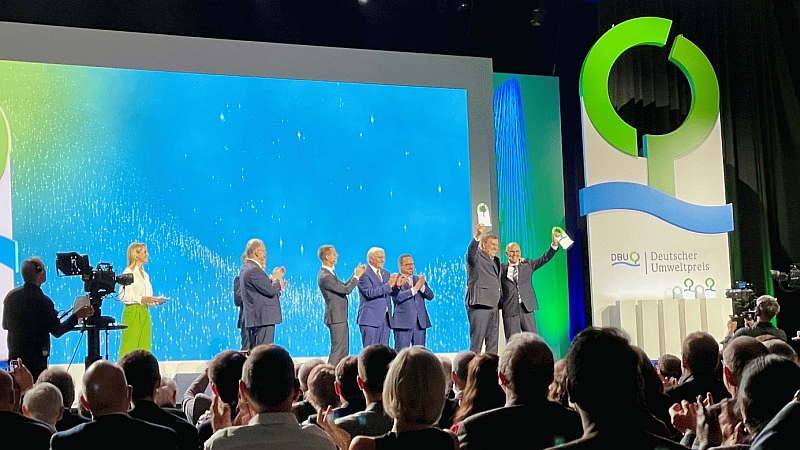On October 30th, the German Environmental Award was presented to our former colleague Friedrich Mewis and Mr. Dirk Lehmann for the development of the energy-saving device Becker-Mewis-Duct. We sincerely congratulate on this award.

On October 30th, the German Environmental Award was presented to our former colleague Friedrich Mewis and Mr. Dirk Lehmann for the development of the energy-saving device Becker-Mewis-Duct. We sincerely congratulate on this award.

September 6 – 9
Hall B4, first floor, booth no. 102.
We look forward to presenting you with the latest information at our booth.
Among others, the following persons will be at your disposal as contact persons:
Dr. Masilge, Managing Director SVA Potsdam GmbH
Mr. Grabert, Head of “Resistance and Propulsion”
Mr. Froitzheim, Head of “Propeller and Cavitation”
Mr. Domke, Head of “Dynamics and Acoustics”
Mr. Lübke, “Computational Fluid Dynamics”
as well as other colleagues from the different disciplines.
The aim of the project is to take into account not only the design condition, as currently practised, but also the off-design conditions, as these occur in particular in waves and during manoeuvring, in the design as well as the hydrodynamic design of the propulsion and manoeuvring elements. This is also related to a more realistic off-design performance estimation. Continue reading “SiRiOS
(12/2021 – 05/2024)”
The aim of this research topic is to develop a concept for the increased use of inland waterways by inland freight transport. This involves providing a modern version of an old transport system, towage, taking into account modern drive and control technology. This will be made possible by modern tractor systems, i.e. autonomously operating lafettes or tractors on a rail system similar to a guardrail. The main advantage is that these tractors can be supplied with the necessary energy via the rail system. This should make an important contribution to the decarbonisation of freight transport on inland waterways. Continue reading “Emission-free autonomous towing system
(11/2021 – 04/2024)”
Mr. Kay Domke, Division Manager Dynamics & Acoustics, has been appointed to the Seakeeping Committee of the ITTC for the 30th period of the International Towing Tank Conference. Tasks include consideration of the interim guidelines for determining the minimum propulsion power required to maintain the maneuverability of ships in adverse conditions in accordance with MEPC.1/Circ.850/ Rev.2. The Seeping Committee is composed of scientists from all continents and is primarily concerned with the behavior of ships in sea states. SVA is pleased with Mr. Domke for this honorable appointment.
The project aims to demonstrate that autonomous inland navigation is possible and that autonomous vehicles make inland navigation economically viable even with smaller units.
The project objective is to provide a defined test field environment (sections of the Spree-Oder-Wasserstraße (SOW)) for research on autonomous and networked water vehicles, especially with regard to a new type of city logistics based on autonomously operating and electrically powered water vehicles. Continue reading “DigitalSOW
(06/2021 – 12/2023)”
Please enable JavaScript! To use the SVA-Website, please enable JavaScript